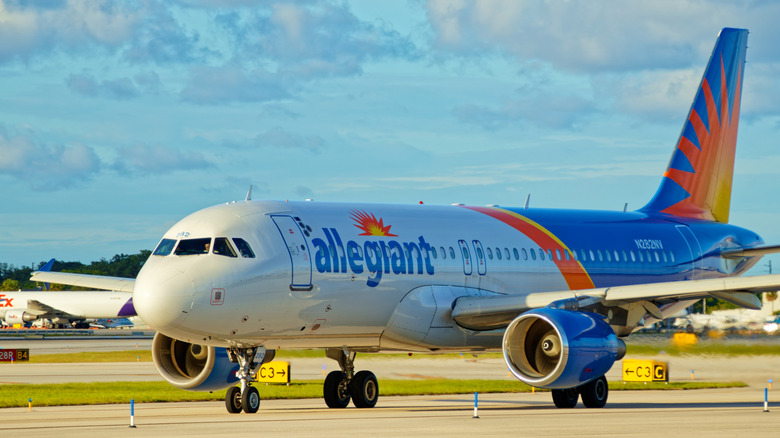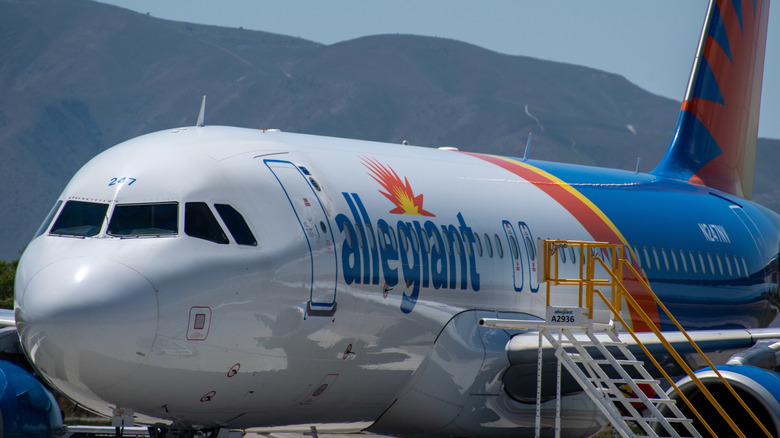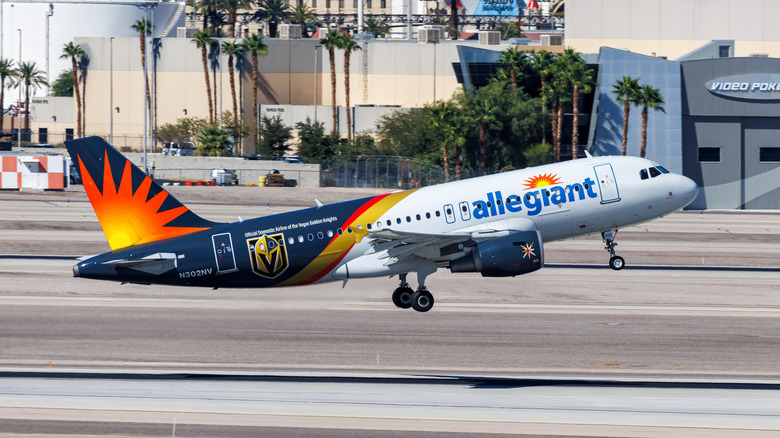Who Owns Allegiant Air & How Are The Airline's Flights So Cheap?
Allegiant Air operates under the Allegiant Travel Company, an airline group publicly traded on NASDAQ. The company was founded under the name West Jet Express in 1997 by CEO Mitch Allee and President Jim Patterson. The name was changed in 1998 to Allegiant Air after a trademark dispute with Canadian airline WestJet Airlines, then reorganized when the company was on the verge of collapse in 2001, with Major creditor Maurice J. Gallagher Jr. taking over to introduce its current low-cost model. Gallagher was no stranger to the industry, co-founding ValueJet in the 1990s and previously owning the commuter airline WestAir.
His playbook focused on strategically managing expenditures to improve efficiency and profitability, making this cheap airline worth using in the eyes of passengers. Gallagher went from CEO in 2003 to chairman in 2006, and stepped into the Executive Chairman role in September 2024, while insider Gregory C. Anderson became the new chief executive officer. Gallagher is the largest individual shareholder, having a 13% stake in the company, with the remaining shares owned by 493 investors, including BlackRock, Vanguard, and the Vanguard Group.
How Allegiant Air keeps fares so low
Allegiant Air doesn't rely on random discounts to keep fare prices low. Instead, it's the product of a tightly designed business model, flying nonstop point-to-point routes from smaller, underserved cities to leisure destinations rather than competing in crowded hub networks. Around 75% of its routes have no direct competition, which gives the company the freedom to control its pricing without being involved in constant fare wars. All passengers care about are the low base fares, while the airline gets the most out of its earnings using an unbundled system of optional fees.
Services such as seat selection, carry-on and checked baggage, and even printed boarding passes all cost extra money. These supplementary fees are a major part of the brand's revenue and are basically how all budget airlines keep flights so cheap. It's a great approach that allows customers to only pay for what they want and ensures the airline makes significantly more per passenger than the ticket price alone. By combining market niche routes with a fee-based revenue, Allegiant can post fares that appear lower than its rivals and still operate profitably in a competitive U.S. travel market.
Efficiency and financial strategy
In order for Allegiant to maintain low fares, it must have strict cost control at nearly every level. Its aircraft are not flown as much as its competitor's planes, which keeps maintenance expenses low. The airline also hires airport staff on an hourly basis instead of full-time employees and designs flight crew schedules so they can return home every day, eliminating hotel costs. Allegiant once had older Airbus jets to keep purchase prices low, but it has now shifted toward long-term efficiency by ordering 50 Boeing 737 MAX aircraft, with options for 50 more.
These planes burn up to 20% less fuel per passenger, offering even more potential earnings in an industry highly sensitive to fuel costs. Allegiant's commitment to financial discipline was shown when it decided to sell its Sunseeker Resort for $200 million and apply the income toward debt reduction. In the second quarter of 2025, the airline reported $689.4 million in revenue and an 8.6% operating margin, proving its ability to remain profitable while peers like Spirit and Frontier face challenges.


